Domes Are An International Star
They are a tourist and architectural attraction. Yet there’s talk of tearing them down.
At last week’s public hearing about the Mitchell Park Horticultural Conservatory, Linda Carlson spoke about seeing articles on Milwaukee’s iconic “glass bubbles” while visiting Australia and Japan. Both features, she noted, urged readers to try to experience the Domes, in one case if traveling “anywhere in the United States.” Carlson was among many citizens who pleaded that the county preserve the horticultural oasis.
Few buildings ever become widely cherished or architectural icons. E-architect, a comprehensive website about worldwide architecture, lists the Domes among 10 significant Wisconsin buildings “that are either of top quality or interesting, or ideally both.” Others include “the Calatrava” at the Milwaukee Art Museum, Eero Saarinen’s War Memorial and four Frank Lloyd Wright projects.
And the Domes’ appeal is not just highbrow. The Wisconsin State Journal’s Barry Adams wrote in 2013: “For many, the name requires little explanation and is part of the Wisconsin vernacular that also includes ‘The Pack,’ ‘brats,’ ‘Up North’ and ‘bubbler.’” PlanetWare, a “travel guide by experts,” lists the Domes as number seven among Milwaukee tourist attractions. And Trip Advisor ranks the Domes 14th on the list of things to do in Milwaukee.
They are also included on a worldwide roster of “prominent conservatories.” It’s among 31 in the U.S, along with the Missouri Botanical Garden’s Climatron, a traditional “geodesic dome.” Architect Donald Grieb tweaked Buckminster Fuller’s geodesic model for the Domes to accommodate taller plants and other features. They are 15 feet higher than the Climatron. Built during the 1960s’ Space Age, the Domes are often termed otherworldly “space ships.”
Mary Louise Schumacher, the Journal Sentinel’s art and architecture critic, recently wrote, “While they share an aesthetic kinship [with Fuller’s geodesic domes], Grieb’s beehive-shaped Domes were distinct and fundamentally more fussy, adding layers of inventiveness.” She adds that its “design wobbles are part of the charm of the Domes, adventurous structures that remain unique in the world. They represent a fascinating moment in architectural history and an idealism about the future and technology that stands in powerful contrast to today’s world.”
Yet, despite their uniqueness and renown, the Domes may be within sights of a wrecking ball. County Executive Chris Abele has made it clear his administration is willing to consider razing them and starting over from scratch, depending on how county residents feel about it. All three glasshouses were closed on February 6, after a piece of chipped concrete was discovered in the Desert Dome in January.
When Abele announced plans for a temporary fix to prevent further problems with the concrete-encased steel frames, he warned that permanent repairs or complete rebuilding could cost up to $71 million. He’s clearly pushing citizens to consider replacing the domes.
“It’s important,” he said, “that we give ourselves the opportunity 50 years after the creation of the Domes to ask ourselves as a community: is this what we want to do going forward; replicate the Domes again?” He later told WTMJ-Radio, “What’s right for the past isn’t (necessarily) right for the future…you can have great memories of the Domes and be excited for what’s next.”
Were Folaron’s remarks merely prescient musings or part of a planned campaign to put demolition on the front burner? Parks director John Dargle reassured hearing attendees that the Domes are “structurally sound,” and that needed repairs relate only to the surface, not the steel framework. But Abele has noted the Domes operation is an annual money loser and his director of community relations, Claire Zautke, read a statement at the recent hearing saying there will be a community-input process, a “once-in-a-generation” opportunity “to build a vision for the future.”
More than 250 citizens attended the February 24 hearing hosted by the county board, and nearly all who spoke urged officials to save the Domes.
Arthur Kapps, a passionately eloquent 12-year-old from Fox Point, said the Domes’ are as important as the County Zoo. “It’s like a zoo with plants” that most people could not otherwise see first-hand, the boy said. “It’s also a work of art and a historic structure–and many plants are historic themselves.”
Citizens called the Domes “a treasure,” “a community meeting place” and “the best classroom in Wisconsin.” Andy Andre said they help him stay sane during winter. Others spoke warmly of attending family-friendly New Year’s Eve celebrations, “Ghosts Under Glass,” holiday displays, concerts, ethnic festivals and the Winter Farmers Market. Roger Krawiecki, president of the 1,600-member Friends of the Domes, called them “magical” for people on dates, field trips and family outings, as well as for international students and those with special needs. Someone described enjoying the Domes from afar, when they’re lit up in the dark.
Mayor Tom Barrett told the Journal Sentinel: “The Domes are very special to anybody who’s been in Milwaukee for any period of time. I wouldn’t want to be the one to tear down the Domes.” State Sen. Chris Larson, Abele’s opponent in the April election, has pledged, “As county executive, I will work with our neighbors to do what it takes to ensure our Domes and other parks are available for future generations.”
Justin Bielinski, challenging incumbent Ald. Bob Donovan, whose district includes the Domes, has said he supports their restoration. Donovan, running both for mayor and alderman, has not weighed in.
“I would argue that everything should be done to preserve the Domes, despite the price tag,” Schumacher concluded. “Sometimes threats of a wrecking ball deliver angels and champions.”
Milwaukee historian John Gurda also discussed the Domes’ past and present in the Milwaukee Journal Sentinel, writing that “We could tear down the Domes, I suppose, but that, in my opinion, would be an admission of abject and premature defeat. The real question is not one of resources but of will…if we can spend $250 million in public funds on a basketball arena whose owners will charge us dearly for the privilege of entering, surely we can invest a much smaller amount in a green wonderland that’s truly public.”
Deep-sixing the Domes would also contradict the current push to create compelling “destinations” with taxpayer subsidies. That buzzword has been applied recently to the proposed “Lakefront Gateway Plaza” and Couture streetcar terminal, and to the planned Bucks 4th Street entertainment center and pedestrian mall.
Folaron cited a historical precedent for a Domes do-over: “In the mid -1950s, the Victorian-styled 1898-built Mitchell Park Conservatory was deteriorating and public dialogue of replacement had begun.” The Journal Sentinel’s Chris Foran recently recapped that decline; long-deferred maintenance was a major cause. Foran noted a 1946 Milwaukee Journal story which reported that ”although the Mitchell Park conservatory was ‘probably the most frequented spot in the county park system,’ not much had been done to improve its condition since the county took over the park from the city in 1937.” After massive windstorm damage, the county razed it in 1955.
Deferred maintenance is probably also the cause of the Domes decline. One glaring difference between then and now, though, is that the original conservatory, while impressive, was not architecturally unique. Rather, it was one of many showplace greenhouses created during the “golden age” of conservatory building. Many bit the dust. The “nation’s largest Victorian-era glasshouse,” is the New York Botanical Garden’s renowned Enid A. Haupt Conservatory. Built in 1902, it has undergone several renovations, most recently in 1997.
The Show Dome is scheduled to reopen around May 1; officials hope the other two will reopen by fall. County officials have said “temporary” fixes to wrap concrete-covered steel frames with protective mesh could cost up to $1 million and last up to 10 years. That gives the community plenty of time to evaluate restoration options before talking about bulldozers and replacing the Domes. The process of determining what to do with Milwaukee’s most-lauded mid-century marvel will say much about how this community views its past—and its future.
The Domes
Political Contributions Tracker
Displaying political contributions between people mentioned in this story. Learn more.
- March 9, 2016 - Justin Bielinski received $100 from Tom Barrett
- February 18, 2016 - Justin Bielinski received $50 from Claire Zautke


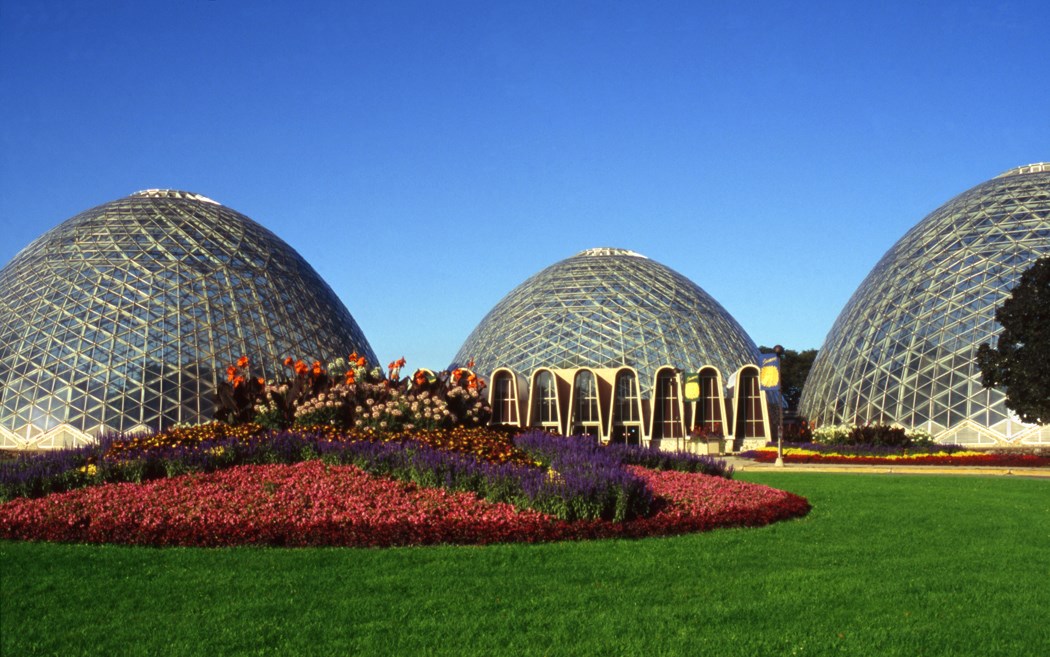
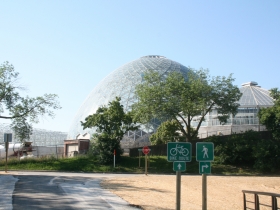
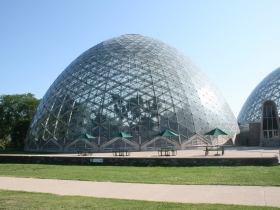
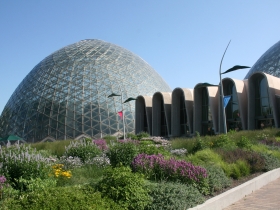
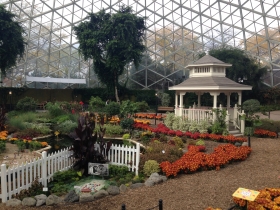

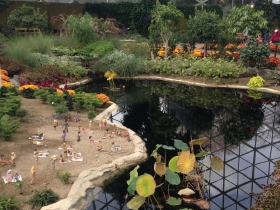




















I have fond memories of regular visits with family (& grandma!) to the Domes in the 1960s-1970s. Maybe 1980s too. Visiting as an adult in the 1990s, my casual observation was that Conservatory standards were dropping: there was less permament plant material in all 3 Domes, and it was looking a little tawdry, but by the 2001s that downward slide was very obvious with wide open views in all three Domes stretching from wall to wall; mature plantings with height had clearly been removed and not replaced.
The Park’s event schedule, like the “… under Glass” events, were a great addition for a multi-purpose place that was desparate to keep its doors open, but not for a true Conservatory setting. Good work to the employees that have kept the old place running on it’s last legs, but the old school employees were probably spinning in their graves.
Can the “Domes” be repaired/replaced and funded as a true “Conservatory” again, hopefully with a permanent endowment and free access? Chicago’s Lincoln Park Zoo and Conservatory (free) or Garfield Park Conservatory (fee?) are examples.
A connected, but separate event space would be great. Johnson Controls a likely sponsor/funder.
Or replace it with a giant ChuckECheese / Dandelion Park experience with lots of flower beds (well-maintained, please?); a mixed use building that has a lot of bling like laser lighting, huge TV screens etc. Water pads and slides would be good too. Visit Navy Pier, Chicago. Likely sponsor/funder? Milwaukee County Parks.
Gary, Yes! The spirit of the Domes can live on. Let’s redo them! Look at the Desert Dome that the Omaha Zoo built. http://www.omahazoo.com/Post/sections/41/Files/Desert%20Dome.pdf
It’s much more sustainable and operationally efficient. We could build two of these for the same price as replacing the three Mitchell Park Domes AND increase the space. Let’s incorporate solar, geothermal and rainwater collection.
Can we be more like the forward thinking Milwaukee that built the Domes in the first place and less like the current Milwaukee that is always looking to the past?
How many people come to Domes every year? They are landmark and should have been fixed instead of an arena that will only have about 50 dates per year. They are poorly run and promoted. Sell them to private group for $1. Maybe the Potawatomi.
Look what happened to the poorly ruin Pabst when Cudahy took it over. County does not run things well, Abele worse. Larson is going to bury the arrogant jerk.
WCD, what does the arena have to do with the domes?
But to answer your question, the Domes see about 200,000 people per year.
And a correction for your post, the Arena sees about 160 events a year, not 50.
Domes attendance has been steadily rising and the County reported it was 248,000 in 2015.
The Domes have experienced a renaissance in recent years with all sorts of innovative year-round programming, including a winter weekly concert series, ethnic festivals, Winter Farmers Market, etc.
It’s also much in demand for weddings (and wedding photos) and special events, including for corporate parties and conventions. Perhaps it could be even better marketed as a tourist destination, but few public facilities seem this beloved by people of all ages and backgrounds. It’s also a bit unusual for an architectural icon to be so loved by the masses, not just by architecture fans.
WCD: The wonderful Pabst success is another whole story, and of which Milwaukee can also be proud.